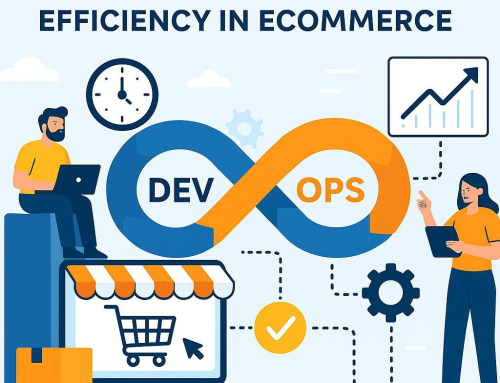Cloud migration is the process of transferring the digital operations of a business to a cloud environment. It enables a business to move servers, databases, applications and other IT processes from their on-premises data centres to the cloud or vice versa, or even move them from one cloud to another. In short, cloud migration involves transferring a workload, be it a software or a service, from one infrastructure environment to another.
So why is cloud migration vital to the digital transformation of businesses?
Successful cloud migration makes business systems more efficient and resilient by improving the flexibility and ease of business operations while boosting the quality of end-user experiences. It also reduces costs and ensures the security of the data stored. What more does a business need in this highly volatile COVID -19 pandemic era?
When workflows got disrupted globally by the pandemic, businesses that had already embraced cloud migration fared much better than the ones that didn’t. IDC confirms that the COVID -19 pandemic has paved way for an increased rate of cloud adoption and extension. The cloud migration process will be different for each enterprise based on their diverse business needs. Hence it is important for businesses to get their cloud migration right for sustained growth.
So how can businesses ensure a successful cloud migration?
Well, here are a few tips :
1. Set clear objectives for migration
While the benefits of cloud migration are many, it is important for businesses to list out their objectives for migration like improving the scalability and efficiency of their IT systems, reducing costs, enabling business continuity during the pandemic, gaining an edge over competitors, etc.
This step will help them streamline what they want to accomplish by migrating to the cloud. It also calls for a baseline assessment of their current IT infrastructure, capabilities and expertise level to establish cloud migration metrics. It will be easy to convert the objectives set into those Key Point Indicators (KPIs) or metrics that can be assigned to respective teams for implementation and measurement by taking into account feedback from all stakeholders concerned. Strategies should be set at the very onset by prioritizing business objectives over technology.
2. Embrace the right applications
With organizations having many systems and applications to enable their business, choosing the right applications for cloud migration is very important. Every business application has its own unique characteristics, technical complexities and architectural differences which may or may not be cloud-ready.
Some perform well on private and hybrid clouds while others perform better on public or even multi-cloud environments. Some applications may need minor tweaking while others may require a complete overhaul of code which could be time-consuming. Hence a thorough analysis of the architecture, complexity and implementation of applications should be done prior to cloud migration.
3. Ensure data security
Data integrity should be maintained to make sure that sensitive data doesn’t get exposed during cloud migration and there is no compromise to the compliance objectives of the organization. The good news is most Clouds has a plethora of services and solutions to ensure or rather take security & compliance to even better levels than it is in a traditional data centre.
So, it is important to set your baselines for security while migrating to Cloud and map solutions in the architecture as well as in the migration plan. Ensure superior data encryption, state-of-the-art access control mechanisms etc are in place to prevent any data breach. And moreover include tools that provide intelligent and constant threat monitoring, trigger alerts for action and log the incidents for trend analysis.
4. Choose the right partner for cloud migration
While all the major Cloud providers compete with each other to provide the best to their customers, managed service partners play the most important role in helping customers choose what is best for them. A capable and experienced partner can simplify the migration strategy which thereby reduces the project timelines, minimize downtimes or business impact, save costs while significantly improving the operational efficiency and service performance.
Businesses must thoroughly analyze the work done by competing partners that cater to domains similar to theirs before making the right choice. The service provider you choose must have a proven track record of managing the complex tasks involved in cloud migration on a global scale. And most importantly, demand for a Proof of Concept (PoC) for the finalized solution and check how it stands against the objectives set.
5. Plan for Business Continuity & Disaster Recovery
Plan for unplanned emergencies to ensure uninterrupted workflows to prevent the occurrence of business disruptions like the ones that happened during COVID-19 pandemic. There should be a Plan B and may be Plan C for each point of failure in your solution architecture to ensure the business is not impacted at all or the impact shall be minimal.
Cloud provides customers with the opportunity to look at creating Disaster Recovery Sites anywhere across the globe to match the business continuity as well as compliance objectives of the organization. And what is really interesting is these Disaster recoveries are not just about recovering your valuable data alone but also resuming your business services seamlessly.
Cloud migration is here to stay. The IDC report ‘Worldwide Whole Cloud Forecast, 2020–2024’ says the “total worldwide spending on cloud services, the hardware and software components underpinning cloud services, and the professional and managed services opportunities around cloud services will surpass $1.0 trillion in 2024 while sustaining a double-digit compound annual growth rate (CAGR) of 15.7%.”
Cloud migration presents businesses with ample opportunities to increase their digital engagement for sustained growth. Hence it is important for enterprises to partner with the right service provider to ensure a smooth transition from legacy systems to a cloud environment. Feel free to contact our experts at Scaleios for customized cloud solutions that suit your business best.






Leave A Comment